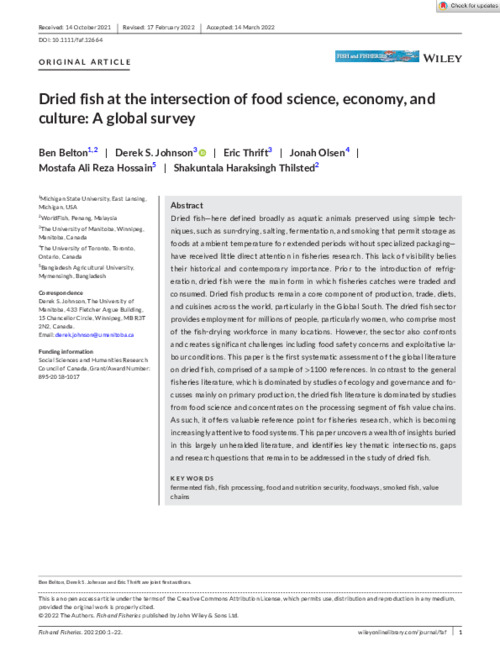Dried fish at the intersection of food science, economy, and culture: A global survey

Dried fish—here defined broadly as aquatic animals preserved using simple techniques, such as sun-drying, salting, fermentation, and smoking that permit storage as foods at ambient temperature for extended periods without specialized packaging—have received little direct attention in fisheries research. This lack of visibility belies their historical and contemporary importance. Prior to the introduction of refrigeration, dried fish were the main form in which fisheries catches were traded and consumed. Dried fish products remain a core component of production, trade, diets, and cuisines across the world, particularly in the Global South. The dried fish sector provides employment for millions of people, particularly women, who comprise most of the fish-drying workforce in many locations. However, the sector also confronts and creates significant challenges including food safety concerns and exploitative labour conditions. This paper is the first systematic assessment of the global literature on dried fish, comprised of a sample of >1100 references. In contrast to the general fisheries literature, which is dominated by studies of ecology and governance and focusses mainly on primary production, the dried fish literature is dominated by studies from food science and concentrates on the processing segment of fish value chains. As such, it offers valuable reference point for fisheries research, which is becoming increasingly attentive to food systems. This paper uncovers a wealth of insights buried in this largely unheralded literature, and identifies key thematic intersections, gaps and research questions that remain to be addressed in the study of dried fish.
Permalink
Date Available
Type
Publisher
ISSN
1467-2960,1467-2979
Copyright
CC-BY-4.0
Language